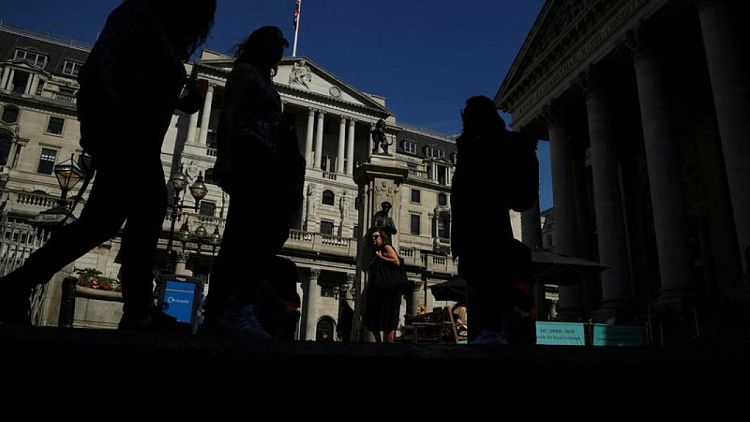LONDON - British government bond prices plunged on Thursday in their biggest daily drop since the COVID-19 meltdown of March 2020, reflecting global market moves and bond investors' unease around the economic plans of Prime Minister Liz Truss.
While it was a bad day for major government bond markets around the world following the U.S. Federal Reserve's decision to hike interest rates by 75 basis points, investors targeted British debt for some of the heaviest selling.
The Bank of England followed the Fed on Thursday with a smaller hike of 50 basis points, which failed to provide a lasting boost to sterling after it touched a new 37-year low of $1.1210 against the U.S. dollar.
Gilt yields, which move inversely to the price, shot higher as a minority of three BoE rate-setters opted for a bigger 75 basis point rate hike, then peaked after the finance ministry confirmed it was reversing a recent increase in payroll tax.
The potential scale of additional government borrowing implied by Truss's plans has undermined investor confidence in gilts over the last month.
Finance minister Kwasi Kwarteng is due to update parliament on tax cuts and plans to help households and businesses struggling with high energy costs on Friday.
On Thursday the 10-year gilt yield topped 3.5% for the first time since April 2011 and as of 1530 GMT was up 20 bps on the day - the biggest such rise since March 2020, when the onset of the COVID-19 pandemic sparked market chaos.
Marc Ostwald, chief economist at brokerage ADM Investor Services, said much of the sell-off in gilts reflected reaction to the Fed decision overnight.
"But part of it is ... also that we're being drip-fed this fiscal event tomorrow. And it just keeps on looking like spend, spend, spend; borrow, borrow, borrow," Ostwald said.
A slim majority of bond strategists and economists in a Reuters poll published this week said there was a high risk confidence in British assets would deteriorate sharply in the coming three months.
The gap between 10-year British and German benchmark bond yields touched 156.4 basis points on Thursday, the highest since 2015.
Gilt yields rose by 19-20 bps across the range of maturities, with two- and five-year yields reaching their highest levels since late 2008.
The 10-year gilt yield has risen 70 bps in September so far, following a 94 bps increase in August that had been the biggest in 36 years.
Taking August and September thus far together, the increase in yield would be the largest since October and November 1979, according to Refinitiv data.












